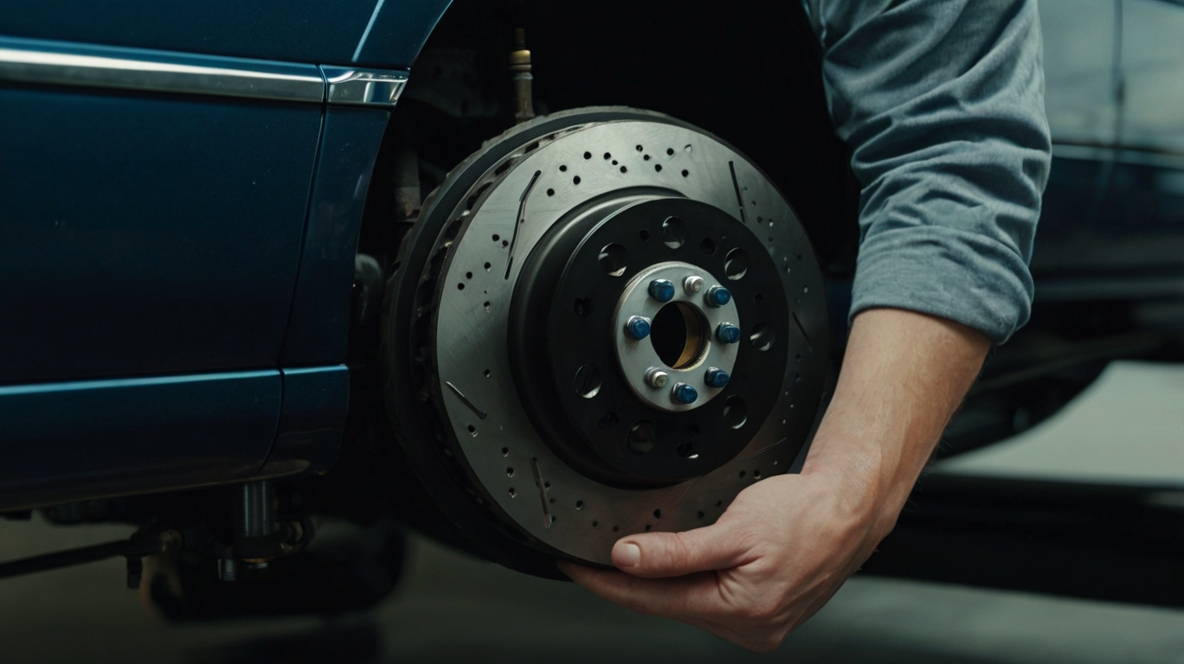
Brake pads are one of the most crucial components of your vehicle's braking system. Over time, they wear down and need replacement to ensure your vehicle maintains optimal braking performance. Changing brake pads yourself can save you a significant amount of money, as typical labor costs at a shop range from $100 to $300 per axle, while the pads themselves cost between $30 and $100. Here’s how to change your brake pads on your own.
Tools and Materials Needed:
- New brake pads (specific to your vehicle)
- Jack and jack stands or a hydraulic lift
- Lug wrench
- C-clamp or brake caliper tool
- Socket set (typically 12mm–14mm for most vehicles)
- Brake cleaner
- Anti-seize lubricant
- Flathead screwdriver
- Mechanic gloves
Steps to Replace Brake Pads
1. Prepare Your Vehicle
- Park on a flat surface: Ensure your vehicle is parked on a flat surface and the parking brake is engaged.
- Loosen the lug nuts: Before lifting the car, use the lug wrench to loosen the lug nuts on the wheel slightly, but don’t remove them yet.
- Jack up the vehicle: Use the jack to lift the vehicle. Place the jack stands under the frame and lower the car onto them for safety.
2. Remove the Wheel
- Finish removing the lug nuts: With the car securely lifted, remove the loosened lug nuts completely and take the wheel off.
3. Access the Brake Caliper
- Locate the brake caliper: The brake caliper holds the brake pads in place.
- Remove the caliper bolts: Use the socket set to remove the bolts holding the caliper (usually 12mm or 14mm). Some vehicles may have retaining clips that can be removed with a flathead screwdriver.
- Support the caliper: Once the bolts are removed, carefully lift the caliper and secure it with a bungee cord or wire to prevent it from hanging by the brake line.
4. Remove Old Brake Pads
- Slide out the old brake pads: The pads should slide out easily from the caliper bracket.
- Inspect the rotors: Check the brake rotors for any visible damage. If they’re excessively worn or have deep grooves, you may need to replace or resurface them.
5. Install New Brake Pads
- Apply brake lubricant: Apply anti-seize or brake grease to the back of the new pads to prevent noise and ensure smooth operation.
- Insert the new pads: Slide the new pads into the caliper bracket, making sure they fit snugly.
6. Compress the Brake Caliper Piston
- Use a C-clamp or brake caliper tool: To fit the new, thicker brake pads, the caliper piston needs to be pushed back into the caliper housing.
- Place the old pad against the piston: Use the C-clamp or caliper tool to compress the piston back slowly. Be cautious not to damage the piston seal.
7. Reinstall the Brake Caliper
- Position the caliper over the new pads: Once the piston is compressed, place the caliper back over the brake pads and rotor.
- Tighten the caliper bolts: Reinstall the caliper bolts and tighten them according to your vehicle’s specifications. This is typically between 25–35 ft-lbs of torque for most vehicles, but always check your car’s manual.
8. Reattach the Wheel
- Put the wheel back on: Align the wheel with the hub and hand-tighten the lug nuts.
- Lower the vehicle: Carefully remove the jack stands and lower the vehicle back to the ground.
9. Tighten the Lug Nuts
- Tighten the lug nuts: Using the lug wrench, fully tighten the lug nuts in a crisscross pattern to ensure even pressure.
10. Test the Brakes
- Pump the brake pedal: Before driving, pump the brake pedal a few times to ensure the brake pads are seated properly.
- Test drive: Take the car for a short drive to test the new brakes, ensuring they feel firm and responsive.
Frequently Asked Questions (FAQ)
Q: How often should brake pads be replaced?A: On average, brake pads should be replaced every 30,000 to 70,000 miles, depending on driving conditions and brake pad material.
Q: Can I replace just the front or rear brake pads?A: Yes, you can replace just the front or rear pads if only one set is worn, but it’s best to replace them in pairs for consistent performance.
Q: What are the signs of worn-out brake pads?A: Common signs include squealing or grinding noises, longer stopping distances, and a vibration in the brake pedal.

